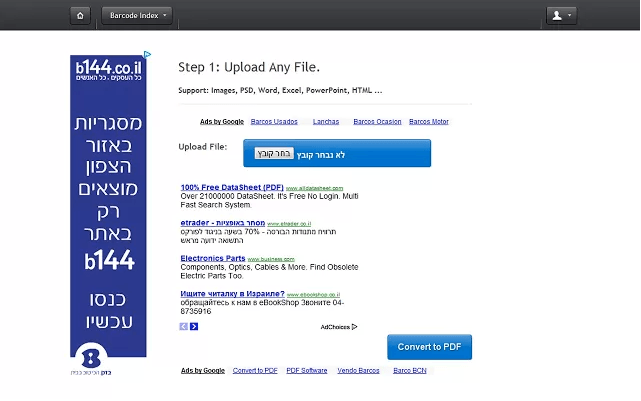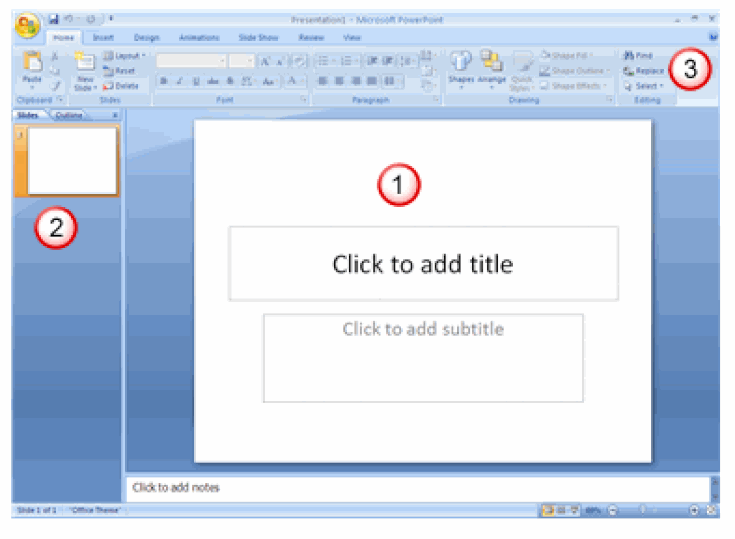Begging For Change Pdf To Powerpoint
Several of the PDFs have PowerPoint presentation attachments. When I test the files, I can open the PDFs and their PPT attachments with no problem on my computer. However, my client is getting the. Asking someone to post their phone number in a public forum is just begging for trouble.
Begging For Change Pdf To Powerpoint Converter
Document assembly seems to be a hot topic these days especially when combined with the power of SharePoint. Today, I want to show you a pretty rich document assembly solution that is able to take multiple Word, Excel and PowerPoint documents and merge them all together to form a final Word document. I showed this solution at both and, so I am going to take the opportunity in this blog to discuss some of the details around the solution. If you want to jump straight into the code, feel free to download the solution.

Scenario Imagine a scenario where I work for a company that analyzes stocks and generates reports for every company/stock analyzed. These reports are typically quite rich and usually involve more than one person contributing to the content. Content is separated out into multiple Word, Excel, and PowerPoint documents where each document is assigned to an individual. Once all the content has been written, the content is all assembled into a final report as a Word document. My company has asked me to write a solution that will be able to merge all these documents programmatically. Solution Before I get into the details of my solution, I want to talk about a brand new feature of, called Document Sets, which I will leverage to help solve this problem.
Document Sets gives users a new way to manage a collection of documents as a single object. Think of this feature as allowing for a binder of related content. In the case of this solution, I have defined a custom Document Set as having a set of files (six in my case) that correspond to the various components of the final analysis report.
Here is a screenshot of a Document Set for a company called Contoso: Using Document Sets and given the scenario I talked about above we will need to take the following actions:. Create a set of documents that represent the Document Set for my solution. One of the documents will be a Word template that represents the look and feel of the final report. Create and add a custom Document Set to a SharePoint library. Create a web part for the SharePoint library that has a button labeled 'Assemble Documents', which will be used to merge all the content together into a final document. This web part will be added to the Document Set library.
Using the Open XML SDK, open the template document from the Document Set and look for all content controls. For every content control found, find the corresponding document content in the library and merge that content into the final document. Once the document assembly is complete, offer the user the ability to open or save the report Step 1 – Creating the Right Template Setting up the right template makes all the difference when creating Office document solutions.
In the case of my solution I have a Document Set with six files, where one of the files is my template file. All these documents are empty except for the template document. As in many of my previous posts, the template document represents the final look of the final report. I will leverage within my template to specify semantic regions within my document to be used to merge content together. The title of my content controls will represent the type of content to be merged. For example, a Word document, a chart from a spreadsheet, a table from a spreadsheet, or a SmartArt graphic from a presentation. The content of my content control will represent the name of the file that contains the content to be merged.
For example, here is a screenshot of my template document highlighting one of my content controls labeled 'Word:Document' with content set to 'Introduction': This content control will represent the region where I will merge the Introduction Word document into my template file. For sake of completeness the other content controls are labeled 'Spreadsheet:Chart', 'Spreadsheet:Table', and 'Presentation:SmartArt'. You can find the files that represent my Document Set.
This method will add a new button control where we can add our logic to merge the documents contained within a given Document Set (the merge code will be called from void btnSubmitClick( object sender, EventArgs e). Once we've created this web part, the next step is to add the button to our Document Set.

The easiest way to accomplish this task is to use SharePoint Designer 2010. Perform the following steps to add your custom web part to the Document Set library:. Open your SharePoint site within SharePoint Designer 2010. Navigate to your document library that contains the Document Set. All Files Custom document library name Forms Document Set name XXXXhomepage.aspx. Click on the bottom of WebPartZoneCenterMain. Save and Close At this point you should see an 'Assemble Documents' command show up for any created Document Set: Step 4 – Finding the Content Controls Finding content controls within a document involves the following steps:.
Open template document from the SharePoint site. Load document into memory. Open document (from memory) with the Open XML SDK. Loop through all content controls within the document. For every content control figure out the title. Based on the title perform a particular action The following code accomplishes the steps outlined above.
Step 5d – Import Table of Data from Excel to Word In a previous post I showed you how to. Today, I will show you how to do the reverse.
Really appreciate this Demo, but I am having a problem. I am basically just trying to cycle through a Word Document, with Content Controls, and replacing the inner text of them with Data that I have from a Database/Hashtable/etc. However, I keep getting an error on the line: foreach (SdtElement sdt in mainPart.Document.Descendants.ToList) Error19The type ‘SdtElement’ cannot be used as type parameter ‘T’ in the generic type or method ‘DocumentFormat.OpenXml.OpenXmlElement.Descendants’.
There is no implicit reference conversion from ‘SdtElement’ to ‘DocumentFormat.OpenXml.OpenXmlElement’. Am I missing a Reference? I have the latest OpenXML SDK, Visual Studio 2010,.Net 4.0.
PowerPoint has a function to send slides to Word for use as handouts etc. In 2007 it would seem that each slide is embedded as a PowerPoint object which is individually editable. I suspect that I could use the SDK to do the same by chopping a copy of the source PowerPoint into a series of single slide presentations and embedding them one by one into the output Word document. I believe when you Send to Word from older versions of PowerPoint the slides come over as jpg images (usually embedded within a Word table) and this is actually all I need. Ideally what I’d want to do is to grab a slide and be able to save it out as a graphic file or stream and then use the SDK to import the resulting image into the Word composite document.

Alternatively, I see in the SDK references to thumbnail objects. Is there a way to create an internal thumbnail graphic for each slide which could then be accessed and embedded into Word. @Rick – Glad to hear you got your solution to work.
@Colin – Interesting scenario. Unfortunately, the Open XML SDK is unable to generate an image for each of the slides within a deck. In addition, there isn’t a PowerPoint Service within SharePoint that is able to accomplish this task. As you mention, you can embed each of the slides as a PowerPoint file within a Word document. The thumbnail approach only works if the file the “Save Thumbnail” checkbox has been checked on document save (Save As dialog).
In other words, the thumbnail needs to be generated by the application, which is probably not possible with your solution.
Begging For Change Summary
Option A If you have Apple Pages Open the Word 2011 document in Pages. Go to the File menu, select Export, choose PDF from the pop out menu and follow the prompt. Option B Go to the free file conversion web site. Follow their four-step process to upload and convert your Word 2011 document to pdf. Note: url addresses in the Word 2011 doc do become hyperlinks in the resultant PDF.
IMO, what we experience is a Microsoft problem NOT Apple nor Adobe. (Apple Pages retain hyperlinks.) You can help get the attention of Microsoft about this issue.
In any of the Office 2011 applications, go to the Help menu and select “Send feedback about Word/Excel/PowerPoint.” That will take you to their web site page. Fill out the form and submit. Note that you can only choose one product to report on at a time. Repeat the feedback by selecting each of the other MS Office 2011 applications.
HTH May 10, 2013 10:09 PM. Aaprior2014: The comments about PDFs refers to Pages 4. Pages 5.x, which requires Mavericks (released in October, 2013), hadn't been released in May, 2013 when this discussion had its last comment prior to yours. But thanks for the information about Pages 5.1. Apple's been slowly adding capabilities to Pages 5 since it was released, but it appears that this helpful feature which was present in Pages 4 has yet to be added to Pages 5.1. Let's hope it's on their list to be included in the future. Mar 29, 2014 7:32 PM.
This has been a long standing issue with Acrobat Pro. When I generate my font article from Safari directly to the Adobe PDF choices, every single link is lost. If I choose OS X's PDF option, it works.
However, then all of the graphic elements get reduced (high JPEG compression). Once saved out of Safari (or any other source) as an OS X generated PDF, then I can open the document in Acrobat Pro and add security, optimize the size, or whatever else and the links are maintained. But the links will not generate in the original PDF output through the Adobe choices.
I've also looked it up on Adobe's site where many users have looked for an answer on the same subject. So far, there is no solution. At least none that I've found. Aug 6, 2014 6:54 AM. Apple Footer This site contains user submitted content, comments and opinions and is for informational purposes only. Apple may provide or recommend responses as a possible solution based on the information provided; every potential issue may involve several factors not detailed in the conversations captured in an electronic forum and Apple can therefore provide no guarantee as to the efficacy of any proposed solutions on the community forums. Apple disclaims any and all liability for the acts, omissions and conduct of any third parties in connection with or related to your use of the site.
All postings and use of the content on this site are subject to the.